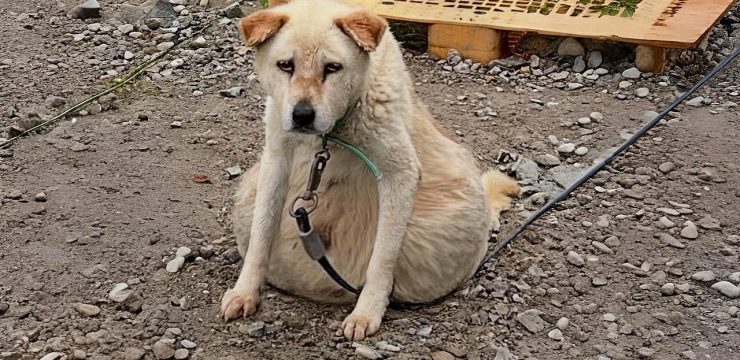In a remote part of India, an unsettling and tragic event unfolded when a camel, reportedly left tethered in scorching heat with no water or shade, turned on its owner in a violent and fatal attack. The incident shocked the village of Barmer, located in one of the hottest and driest districts in the country, and has since sparked global conversations about animal treatment and the dangers of neglecting even seemingly docile creatures.

The event happened in 2016, during a period of brutal heatwaves when temperatures soared to over 120 degrees Fahrenheit. In this relentless heat, the camel had been tied up with its legs bound, unable to move freely, and left to suffer under the intense sun. As the hours passed, the animal became increasingly distressed. It had no access to water, no shade, and no reprieve from the burning heat. According to witnesses, the camel was agitated—growling and pacing—long before the fatal attack.
The camel’s owner, a man named Urjaram, had been hosting guests inside his home when he suddenly remembered the animal tied outside. Reports say he rushed out, likely realizing the severity of the heat, only to find the camel in a state of panic and rage. The moment he approached the camel to untie it, things took a devastating turn.
Eyewitnesses recounted a chilling scene. The camel, overwhelmed with stress and fury, lunged at Urjaram. It grabbed him by the neck, slammed him to the ground, and then bit into his body with terrifying force. One local described how the camel not only bit Urjaram repeatedly but also severed his head from his body in full view of horrified villagers. Even after the man was lifeless, the enraged animal didn’t stop.
It reportedly took around 25 people and nearly six hours to subdue the camel. Villagers had to use ropes and even a truck to restrain and drag the animal away from the scene. This was not a quick or easy task—the camel was in a frenzy, making it nearly impossible to approach safely.
What disturbed many even further was the suggestion from some villagers that this was not the first time Urjaram and the camel had issues. Rumors of ongoing tension between the two raised the question of whether this tragedy was the result of long-term mistreatment, not just a single act of negligence.
This horrific story has cast a harsh light on the realities of animal welfare, particularly for animals like camels that are often perceived as peaceful, obedient, and resilient. In desert communities, camels are vital—they’re known for their endurance, their ability to survive with little water, and their strength. They’re often thought of as gentle giants, loyal and hardworking. But this incident challenged that perception and reminded people that any animal, no matter how accustomed to human presence, has limits.
Animal behavior experts have long warned about the risks of neglecting large animals. Though camels are generally calm, pushing them too far—especially in extreme heat, dehydration, or physical restraint—can lead to aggressive behavior. They are not just heavy creatures; they are incredibly strong and capable of inflicting serious harm.
An expert told The Sun that adult camels can fit a person’s head, arms, or even torso in their mouth. They have the strength to crush bones and are capable of kicking both forward and backward. In a rage, they can kneel down to apply crushing pressure with their full body weight. With a weight of up to 2,200 pounds, a camel in distress becomes not just unpredictable—but deadly.
And this isn’t the only time a camel has retaliated violently against a human. In 2023, a similar incident occurred at a children’s holiday camp in Siberia. A Bactrian camel, known to be peaceful, was reportedly hit in the face by its owner after having its reins pulled too hard. The animal responded by trampling its owner to death. Local media reports suggested that the camel was not accustomed to such treatment and reacted violently after years of peaceful behavior.
In March 2022, two men were attempting to capture a camel that had escaped from a petting zoo. The animal attacked both men, killing them before turning on responding police officers who were trying to help the victims. And in a separate case, a camel at a wildlife sanctuary in Mexico killed its owner, 60-year-old Richard Mileski, by kicking, biting, and eventually sitting on him. According to reports, the weight of the animal on his chest caused fatal asphyxiation.
These stories, as disturbing as they are, underline a universal truth: animals have limits. Regardless of how familiar they are with humans, how domesticated they may seem, or how often they serve us, animals feel pain, fear, stress, and anger. And when they’re pushed too far—when their basic needs are ignored or when they’re treated cruelly—they may snap in ways that are both tragic and violent.
Camels, in particular, are known for their quiet strength and patience. But that patience should not be mistaken for invincibility. They require care, hydration, and rest just like any other living creature. These events serve as haunting reminders that our relationship with animals should always be built on respect and understanding.
So, where do you stand on this? Do you feel sympathy for the camel, pushed to the brink in unbearable heat? Or do you mourn the tragic death of the owner who perhaps made a terrible mistake? There may be no easy answers, but one thing is clear: when we choose to take responsibility for an animal, we owe them more than food and shelter. We owe them kindness, protection, and compassion.
This incident has left a lasting impression not just on the people of Barmer, but on all who have heard the story. It’s a warning, a lesson, and a plea—for better treatment of the animals we so often take for granted.
Please share your thoughts and let others know. Are you team camel or team human? Either way, this story deserves to be told. Share it with your friends and start a conversation today.





